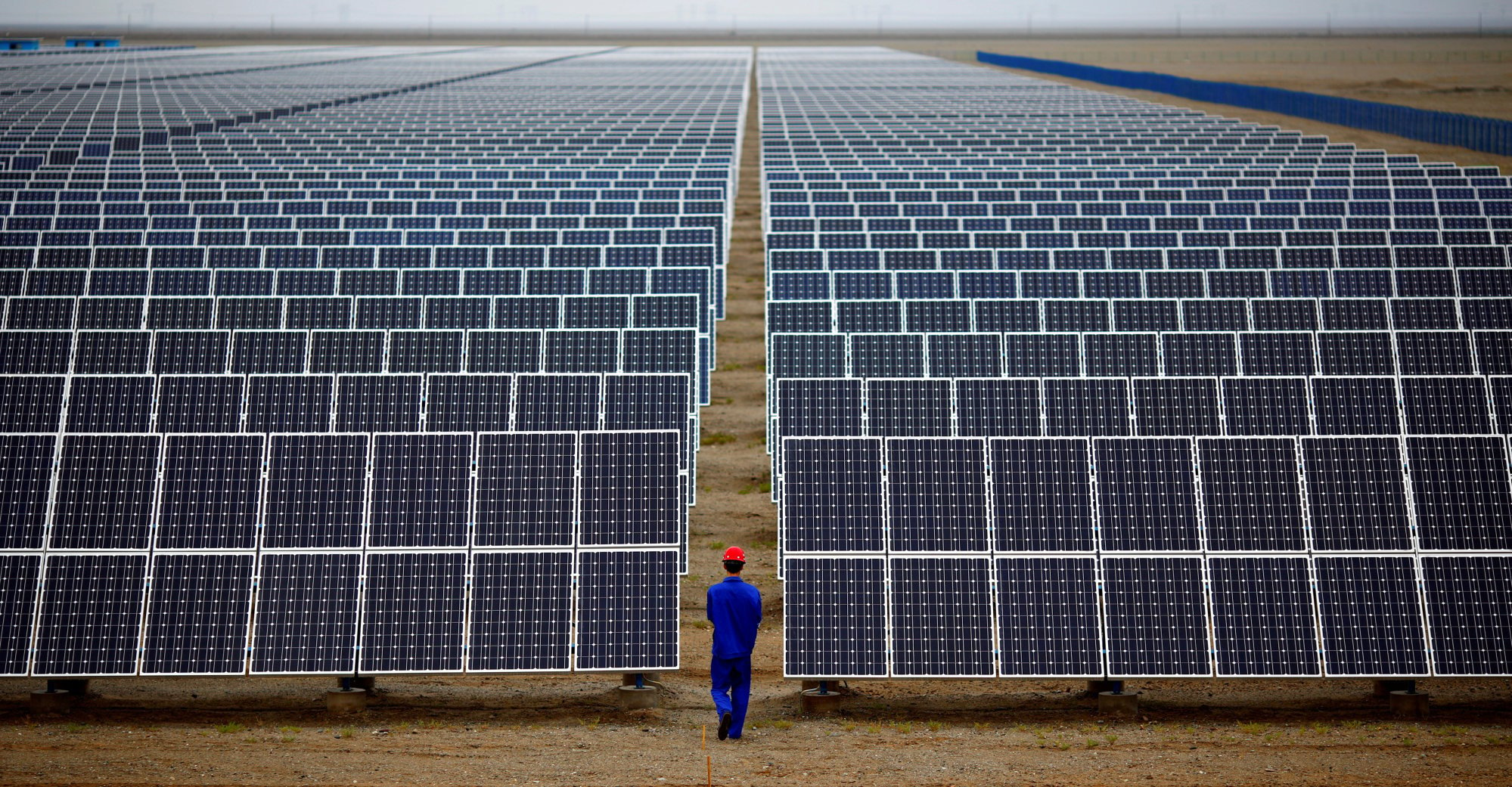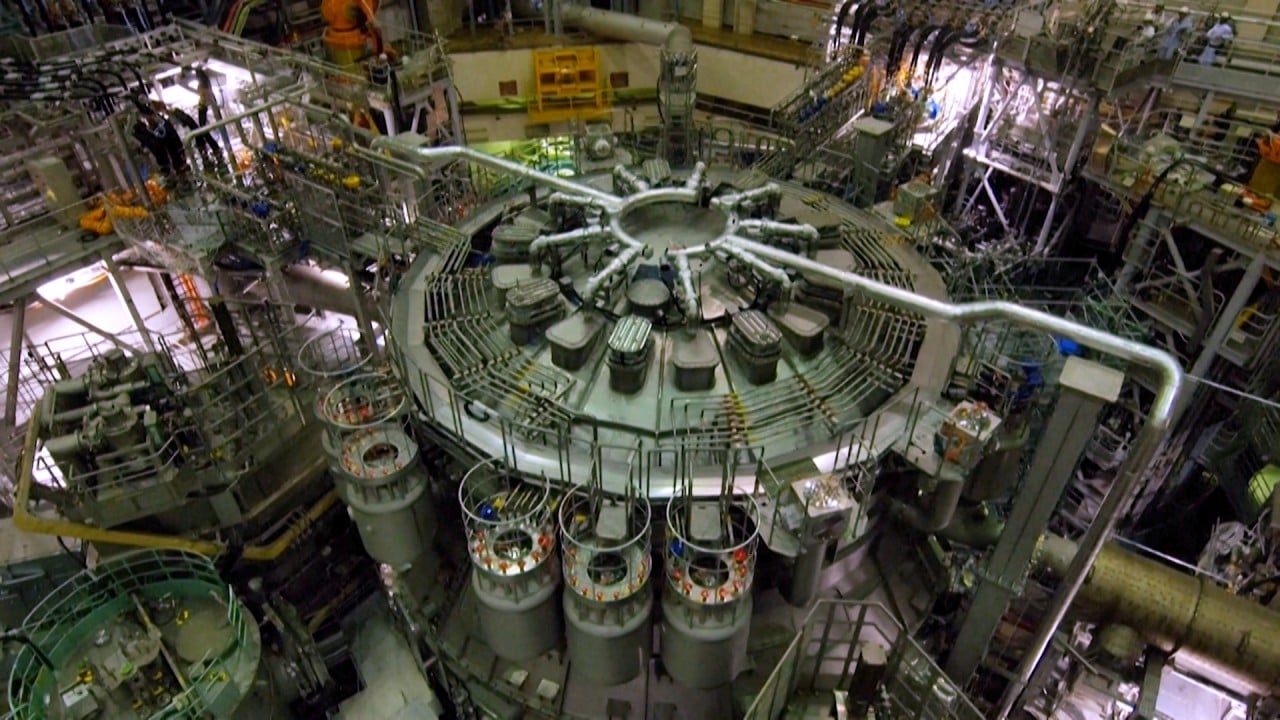Until now, no other large regional power grid has seamlessly integrated such a substantial portion of renewable energy while maintaining such high utilisation rates throughout the year, according to the scientists.
Its distance from the ocean and inhospitable terrain, characterised by harsh deserts such as the Gobi and the Taklimakan, have resulted in sparse populations.
However, the region is rich in natural resources, including oil, coal and an abundance of green energy sources. It is the source of 60 per cent of China’s solar energy and one-third of its wind power.
But now, “the northwest power grid has already brought an early stage of this new type of power system to life,” wrote Professor Ma Xiaowei and his team from the Northwest Branch of the State Grid Corporation of China and Xian Jiaotong University in a peer-reviewed paper published last month in the Chinese academic journal Power System and Clean Energy.
The installed capacity of renewable energy in the region has reached 230GW, with half that electricity transmitted over 10 ultra high-voltage direct current transmission lines to densely populated eastern coastal provinces.
These power lines span thousands of kilometres, crossing nearly the width of China, making the northwest power grid “the regional power grid with the strongest outbound capacity and the largest scale in the world,” said Ma and his colleagues in their paper.
Asean renewable energy sector gets boost from China’s solar projects
Asean renewable energy sector gets boost from China’s solar projects
But after careful comparison Ma’s team found that “China’s northwest power grid has surpassed the EU in core renewable energy utilisation indicators, reaching world-leading levels”.
If all deserts on Earth were blanketed with solar panels and wind turbines, the electricity generated would dwarf existing human needs. But engineering hurdles have long rendered this vision impractical: transmitting vast amounts of electricity over vast distances is a daunting goal and traditional grids cannot handle the wild fluctuations of renewable energy.
Chinese engineers have grappled with these challenges and learned some painful lessons. In 2014, according to Ma’s paper, a wind turbine triggered a power surge that travelled 400km (248 miles), wreaking havoc on another wind farm.
China’s explosive growth in renewable energy in recent years has compounded these issues. Changes in sunlight and weather can cause power supply capacity fluctuations of up to 50 gigawatts in a single day in the northwest grid – a gap equivalent to the combined power of all nuclear reactors operating in France.
To address this challenge, China has built the world’s most advanced high-voltage long-distance direct current transmission lines, effectively reducing power loss during long-distance transmission. Scientists and engineers in China have also incorporated artificial intelligence to enable them to predict generation capacity up to 10 days in advance by analysing large amounts of sensor data.
“In stable weather conditions the prediction accuracy is very high,” Ma’s team wrote in the paper.

Coal-fired power plants have served as the main stabilising force in China’s power grid, but they are no longer sufficient in the northwest because of the rapid growth in solar and wind power. To fill the gap, the Chinese government built hydropower stations upstream of the Yellow River, serving as the backbone for regulation and energy storage.
These reservoirs not only irrigate arid regions but also cut nearly 20 billion yuan (US$2.8 billion) in grid regulation costs, delivering huge economic and ecological benefits, according to Ma’s team.
Another core technology lies in achieving complementarity between renewables. This requires a robust and reliable information sensing and control system. Nearly half the renewable energy generation facilities have joined this responsive mutual aid system, Ma’s team said.
An AI entrepreneur in Beijing said energy supply would be pivotal in the looming competition for national strength between China and the US. The Biden administration, in a bid to stifle China’s AI progress, has banned the sale of cutting-edge AI chips to China.
“The advantage of these chips lies mainly in their slightly lower power consumption. But as China’s electricity supply grows, Chinese firms can use less advanced chips to achieve similar AI training results,” said the entrepreneur, who asked to remain anonymous.
“The increased electricity costs are negligible compared to the overall investment in the AI race.”
Before the pandemic, China’s power generation capacity was twice that of the US; now, it is nearly three times as much. US electricity prices rose 20 per cent from 2021 to 2023 because of inflation while China’s have remained steady. In some renewable-rich regions, Chinese firms have greater discounts than before.
China breaks ground on major project to boost renewable energy storage
China breaks ground on major project to boost renewable energy storage
The Chinese government is forging ahead with plans to build data centres and AI servers in energy-abundant western regions, aiming to bolster the global competitiveness of tech giants such as Huawei.
American households consume nearly 40 per cent of the total electricity generated in the country, with businesses consuming about 35 per cent and factories using roughly 25 per cent. But in China, the demand for power in commercial and industrial sectors looms large, accounting for over 80 per cent of the total.
"electric" - Google News
February 20, 2024 at 10:00PM
https://ift.tt/guJmacs
China creates electric power in its western deserts equal to half that in US - South China Morning Post
"electric" - Google News
https://ift.tt/QxkwRWT
https://ift.tt/fevsBLV

No comments:
Post a Comment